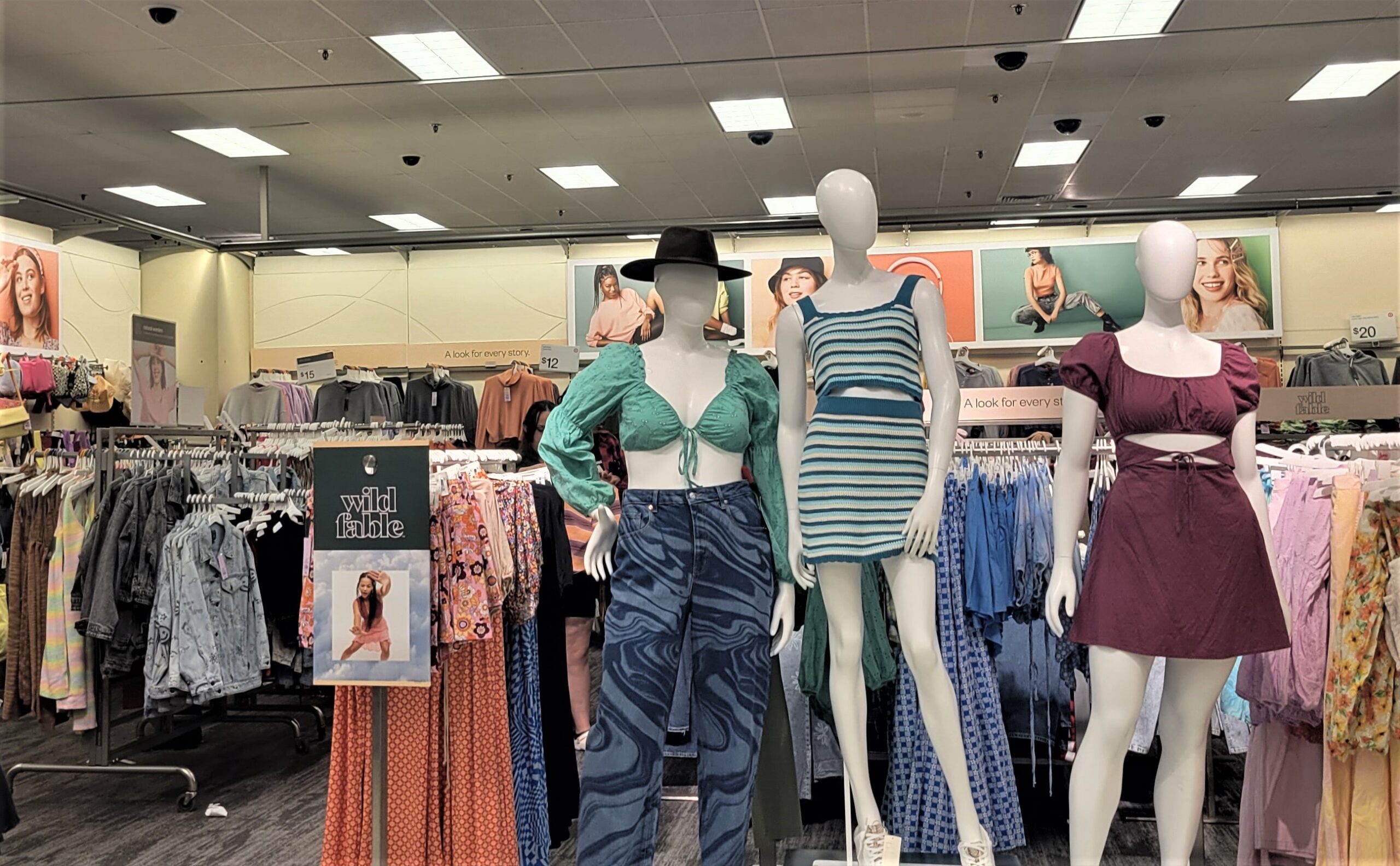Wild Fable is a fast-fashion brand sold at Target; they have an extensive range of women’s clothing, accessories, and jewelry. Photo by Yennifer Ho
By: Yennifer Ho, Staff Reporter
The fast fashion industry is one of the greatest contributors to pollution, responsible for 10% of global emissions and producing 20% of global water waste according to The United Nations Economic Commission for Europe. Essentially, fast fashion refers to how clothing is rapidly mass-produced and sold into markets. Fast fashion manufacturers base their clothing on the latest trends, disregarding its quality and longevity while also mimicking luxury items.
Fast-fashion brands for both men and women like Forever 21, Shein, and Boohoo are popular for their relatively cheap and stylish clothing. Even department stores like Walmart and Target sell similar clothing. The problem is, these types of clothing were not made to last and certain consumers will dispose of them as trends keep changing.
Los Angeles-based photographer, Sinbad, stated “It’s not something I care too much about or pay attention to, [but] it’ll always be around because of trends and people thinking staying with the new designs is important.”
He also emphasized his disinterest in following trends and name brands, finding thrifting to be most ideal in purchasing clothing like band apparel.
With the power of social media, fashion trends influence a large population of people and clothing brands. Social media platforms like Instagram and TikTok played a huge role in setting the trend inspired by the 2000s consisting of apparel like ribbed cardigans, low-cut jeans, and mini skirts around last year. The fast fashion industry was quick to produce clothes in that style.
“What becomes popular creates more demand; more demand creates low quality and higher quantity [products], it’s not ideal but it makes money,” Sinbad said.
California State University, Dominguez Hills student, Kimberly Resendiz, prefers to shop at thrift stores too. However, she admits that pants are more difficult to find, so she resorts to going to Target or Ross. She also highlighted the positives of fast fashion including its affordability.
“Also, plus-size people can find clothes that will fit them and have a variety of fashion styles,” Resendiz said.
She argued fast fashion is negative as well because it damages the environment. For instance, companies throw away extra material, and a lot of clothing ends up in landfills.
Another issue many people are not aware of is that clothing made of synthetic fibers can produce micro-plastic waste when it is washed, ending up in the ocean. Research by Science Direct has shown that a single garment can produce more than 1,900 fibers per wash from domestic washing machines. Microplastic is a global dilemma, it harms natural ecosystems and eventually enters our bodies when we eat and drink.
CSUDH Zero Waste Coordinator, Lily Ledesma, suggested some advice on how to be more sustainable besides thrift shopping. “For students, I would recommend investing in basics that you can mix and match to create a variety of looks for a lot less.”
She also mentioned swapping clothes with friends if they need more clothing and warned about “eco-friendly” clothing. Companies claim some of their clothing lines are sustainable, but in reality, they still use resources and generate waste.
Despite the more sustainable options, the fast fashion industry continues to thrive because of excessive demands. There is no clear solution in combating this, but people can take significant steps like repurposing old clothing, buying second-hand items, and thinking thoroughly before making purchases.

